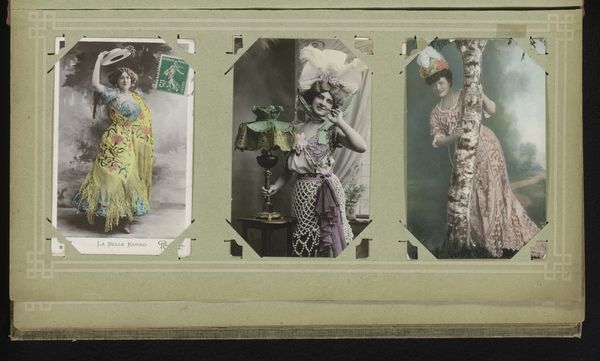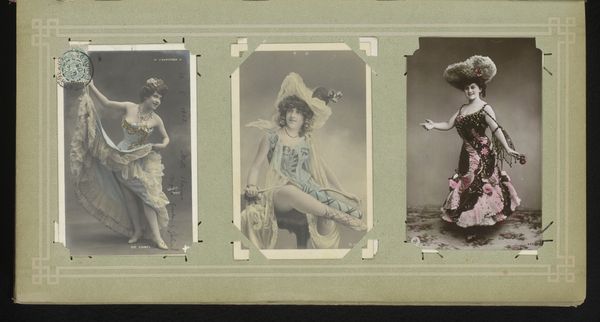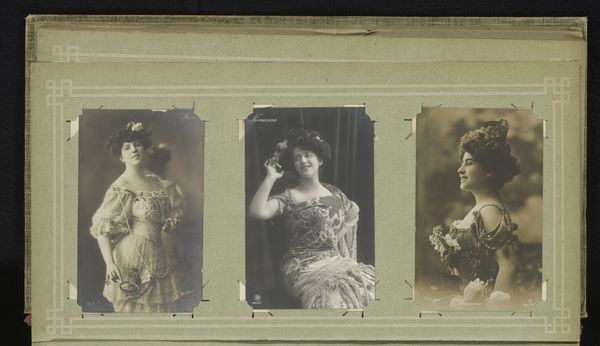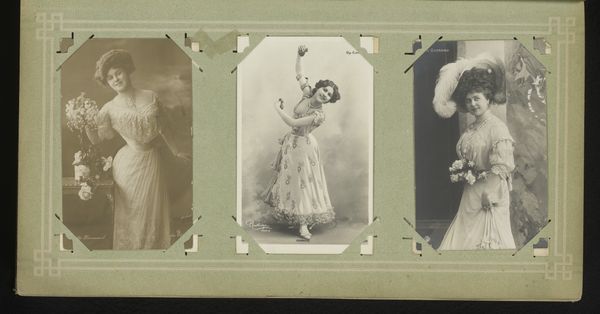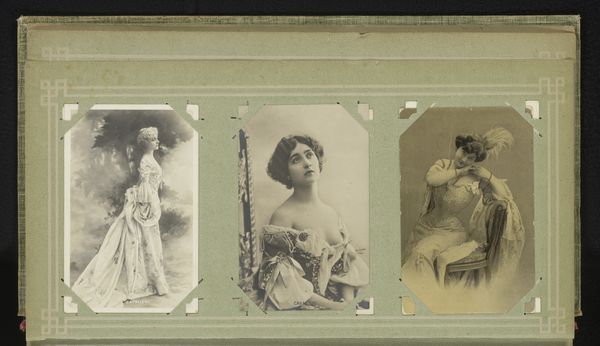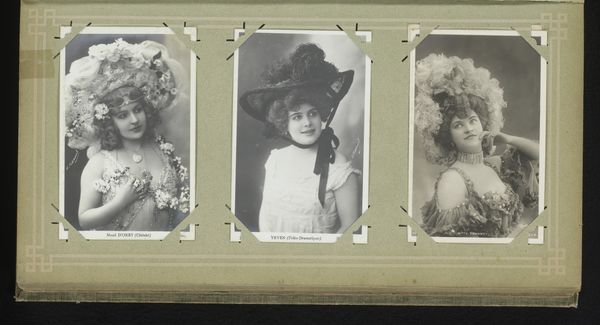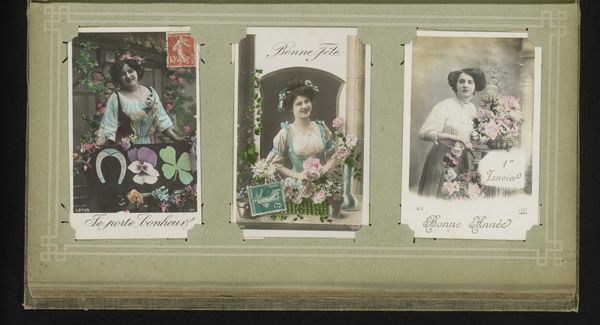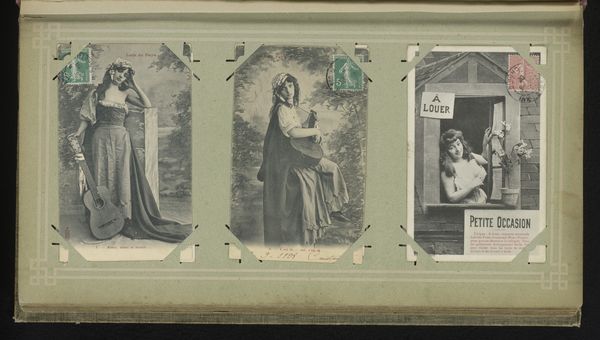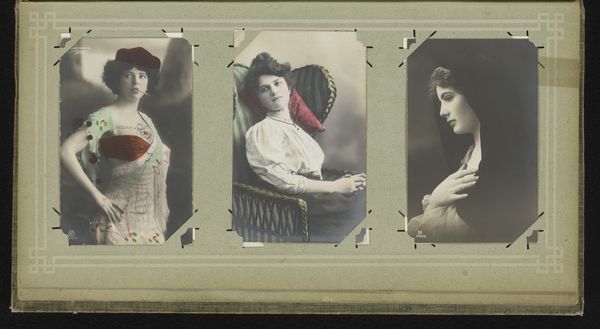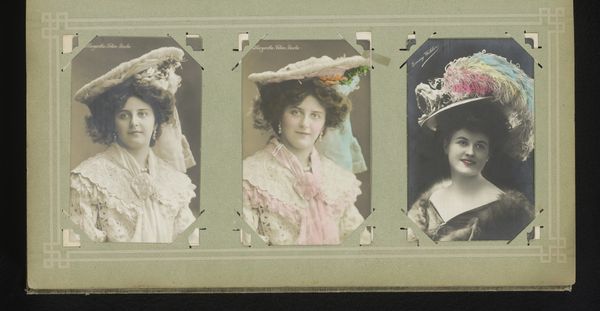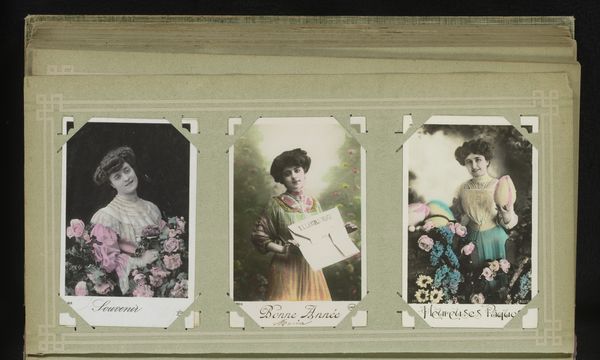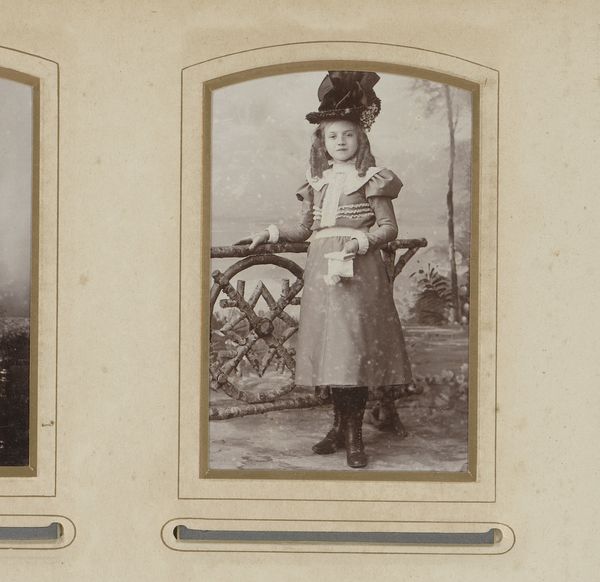
Dimensions: height 196 mm, width 368 mm
Copyright: Rijks Museum: Open Domain
Curator: Here we have "Drie portretten van actrices, onder wie Marcelle Lender" created sometime between 1900 and 1930 by Ch. Reutlinger. It's a photographic piece. What's your immediate impression? Editor: There's an undeniable air of staged theatricality about it, wouldn't you say? And something about the slightly muted colours evokes both luxury and artifice. It makes me consider performance and presentation. Curator: I see it similarly. Reutlinger captures three staged images within one frame. Note how the artist frames them separately, accentuating different facets of early 20th-century celebrity and beauty ideals. It really strikes me as intentional that the figure in the central portrait holds a mirror to her own face, drawing attention to performativity itself. Editor: Absolutely. Each portrait presents a carefully constructed persona. Considering the historical context, one might consider how such images shaped public perception of actresses like Lender, particularly regarding their role in broader social dialogues on femininity and power. These images circulated widely, influencing fashion, expectations of women, and much more. Curator: And how potent those images become when considered in multiples! Grouped together, the portraits present a symbolic tableau—the performer demurely turned away from our gaze in one panel; boldly front-facing in the next with her own mirror, actively observing herself, her presentation; and another in yet another entirely distinct character. A complete, or perhaps incomplete, series of public poses for consumption. Editor: The poses become somewhat subversive, I believe. Reutlinger perhaps is offering multiple representations, yet the control and the access to Lender’s narrative still lie with Reutlinger, potentially perpetuating the objectification of female performers rather than empowering them. These women could be reduced to commodities despite the appearance of artistic reverence. It's worth delving into these layers. Curator: You're right. Those complex layers—the play of looking, performing, and being seen—give these portraits a lasting resonance. They encourage a close look at not only the image but the ways in which art both reflects and constructs the ideas it means to express. Editor: Indeed, analyzing who holds the gaze and for what purpose is central here. Thank you for shedding further light on this.
Comments
No comments
Be the first to comment and join the conversation on the ultimate creative platform.

